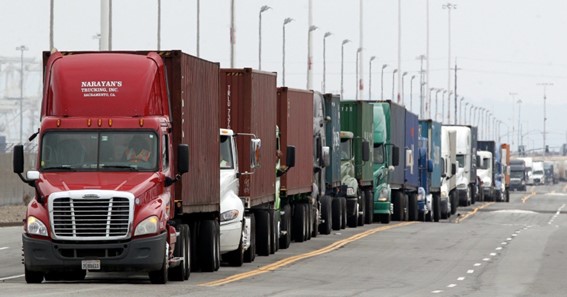Body
In the post-pandemic period, the supply chain broke down. A number of long-standing causes in the trucking industry contributed to this, the main ones being a shortage of drivers and equipment problems.
For the supply chain to work smoothly, the entire chain must work smoothly. When a ship with cargo arrives at the port, cranes quickly unload the containers onto trucks, which are immediately carried to their destinations.
If one of the elements of this system fails, the chain ceases to function smoothly. Unfortunately, the world is not perfect, and sometimes this happens.
To understand the significant role that trucks play in this chain, you have to know that last year they moved more than 70 percent of all goods transported in the United States. When the trucking industry struggled to move more than 10 billion tons of goods last year, it faced many pandemic-related road challenges.
The supply chain was not prepared for such a serious surge in demand for goods. In addition, COVID caused many overseas factories to shut down, resulting in subsequent overloading of ports around the world. In the U.S. the situation was also complicated by a shortage of truck drivers and vehicle parts. As a result, consumers had to deal with shortages of goods, longer lead times, and inflated prices.
But we cannot blame what happened only on the pandemic. It is important to understand that most of the problems of the trucking industry existed before.
Last year’s American Transportation Research Institute report on key trucking issues included survey results from more than 2,500 industry stakeholders, including trucking companies, drivers, suppliers, driving instructors, and law enforcement.
For the fifth year in a row, a shortage of drivers has been identified as the industry’s biggest problem. This time it received four times as many votes as the second-place driver retention. Driver compensation, lawsuit-abuse reform and a lack of available truck parking are the next three most prominent. Also of note, a shortage of diesel engine repair technicians, which made the list for the first time, came in 10th place.
With a severe shortage of truckers in the industry, HMD Trucking conducts continuous recruitment, offering decent pay, good working conditions and other benefits. You can find out more about them by visiting our website: https://www.hmdtrucking.com/.
Professional truckers accounted for a quarter of the survey participants. According to them, the main problem was the issue of drivers compensation and truck parking. Second place was taken by delays at customer facilities.
So we can conclude that previous driver shortages and driver retention in the aftermath of the pandemic have become an even bigger problem, affecting the entire supply chain.
At the moment, the trucking industry is missing 80,000 drivers. This is a record number, but if the trend continues, it could double by 2030.
In addition to the above-mentioned problems, the industry is faced with a significant shortage of container chassis. Because of this, truckers are forced to wait in line until they are available, which only makes an already overloaded process even more difficult. And given the constant consumer demand, there are far more cargoes than there are chassis to carry them.
It wasn’t that long ago that shipping lines took an active role in owning and operating chassis. Before the pandemic, some of them decided to sell this part of their business to a few equipment and chassis rental companies, which are now overwhelmed by unprecedented demand.
This problem is also not new and predates COVID. It has been caused by an increase in the size of ships, which now hold more containers than before. The price of imported steel, from which chassis are made, has also risen appreciably, making them more expensive. The price of a new chassis can now run as high as $25,000, but the long-term losses related to not moving the products to market seem to outweigh the costs.
The problems have become so widespread that the White House has looked into them, recently announcing specific initiatives to respond to driver shortages, hiring, pay, retention and others.
The administration plans to speed up the process for drivers to obtain industrial licenses, increase the number of registered apprenticeships, and focus on attracting 70,000 veterans who can get a trucking license while serving in the military. In addition, the administration is launching the Driving Good Jobs initiative, a new partnership between the Division of Transportation and the Division of Labor that will hold hearings with drivers and other industry representatives and determine driving retention best practices.
As part of the initiative, the administration announced that trucking companies must develop new applications for a registered apprenticeship program within 90 days that will allow apprentice drivers to be paid as they learn. In addition, a new apprenticeship broker, FASTPORT, was created to help employers, unions and trucking trade associations create and implement a registered apprenticeship program in just two days.
These are great initiatives, but reshaping the industry is not possible in a short period of time and takes a long time. So we can state that we are now only at the beginning of a long and difficult journey.







